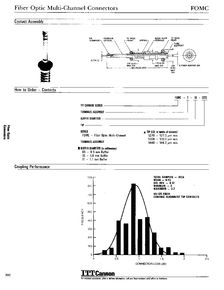Understanding OM4 Fiber: A Comprehensive Guide

OM4 fiber, a significant advancement in the realm of optical fiber technology, has become a staple in high-speed networking and data centers. As you delve into this article, you’ll discover the intricacies of OM4 fiber, its applications, and how it compares to other types of fiber optics.
What is OM4 Fiber?

OM4 fiber is an upgraded version of the popular OM3 fiber. It is designed to support higher data transmission rates and longer transmission distances. Specifically, OM4 fiber excels in 10Gbps and above speeds, particularly at the 850nm wavelength. This is due to its significantly higher effective modal bandwidth compared to OM3 fiber, which is more than double in some cases. This increased bandwidth translates to greater data throughput and longer transmission distances within the same network configuration.
Physical Characteristics

OM4 fiber features a 50/125渭m core diameter, which is a standard size for multimode fibers. The “50” refers to the core diameter in micrometers, while “125” represents the cladding diameter. This structure is advantageous for short-wavelength light transmission and helps reduce mode dispersion, thereby improving transmission quality and distance.
Color Coding and Compatibility
The outer jacket of OM4 fiber is typically a water blue color, making it easy to distinguish from other types of multimode fibers. One of the key advantages of OM4 fiber is its compatibility with OM3 fiber. This means you can upgrade your existing OM3 fiber infrastructure by simply replacing or upgrading your network equipment.
Applications
OM4 fiber is widely used in data centers and enterprise networks for server-to-server connections, storage area networks (SAN), and data center backbone links. Its high bandwidth and long-distance transmission capabilities make it crucial for meeting the growing demand for data transmission. Additionally, OM4 fiber is essential for supporting advanced network technologies, such as 40Gbps and 100Gbps Ethernet standards.
Comparison with Other Fiber Types
When comparing OM4 fiber to other types of fiber optics, it’s important to consider factors such as bandwidth, transmission distance, and cost. OM4 fiber offers higher bandwidth and longer transmission distances compared to OM3 fiber, making it a better choice for high-speed networking applications. However, it’s worth noting that OM4 fiber is more expensive than OM3 fiber, which may be a consideration for budget-conscious projects.
Table: Comparison of OM3 and OM4 Fiber
| Parameter | OM3 Fiber | OM4 Fiber |
|---|---|---|
| Core Diameter | 62.5渭m | 50渭m |
| Cladding Diameter | 125渭m | 125渭m |
| Bandwidth | Up to 10Gbps | Up to 40Gbps |
| Transmission Distance | Up to 300 meters | Up to 500 meters |
| Cost | Lower | Higher |
Conclusion
OM4 fiber is a powerful and versatile optical fiber technology that is well-suited for high-speed networking and data center applications. Its higher bandwidth, longer transmission distances, and compatibility with existing OM3 fiber infrastructure make it an excellent choice for modern networking needs. As technology continues to evolve, OM4 fiber will undoubtedly play a crucial role in the future of high-performance networks.



